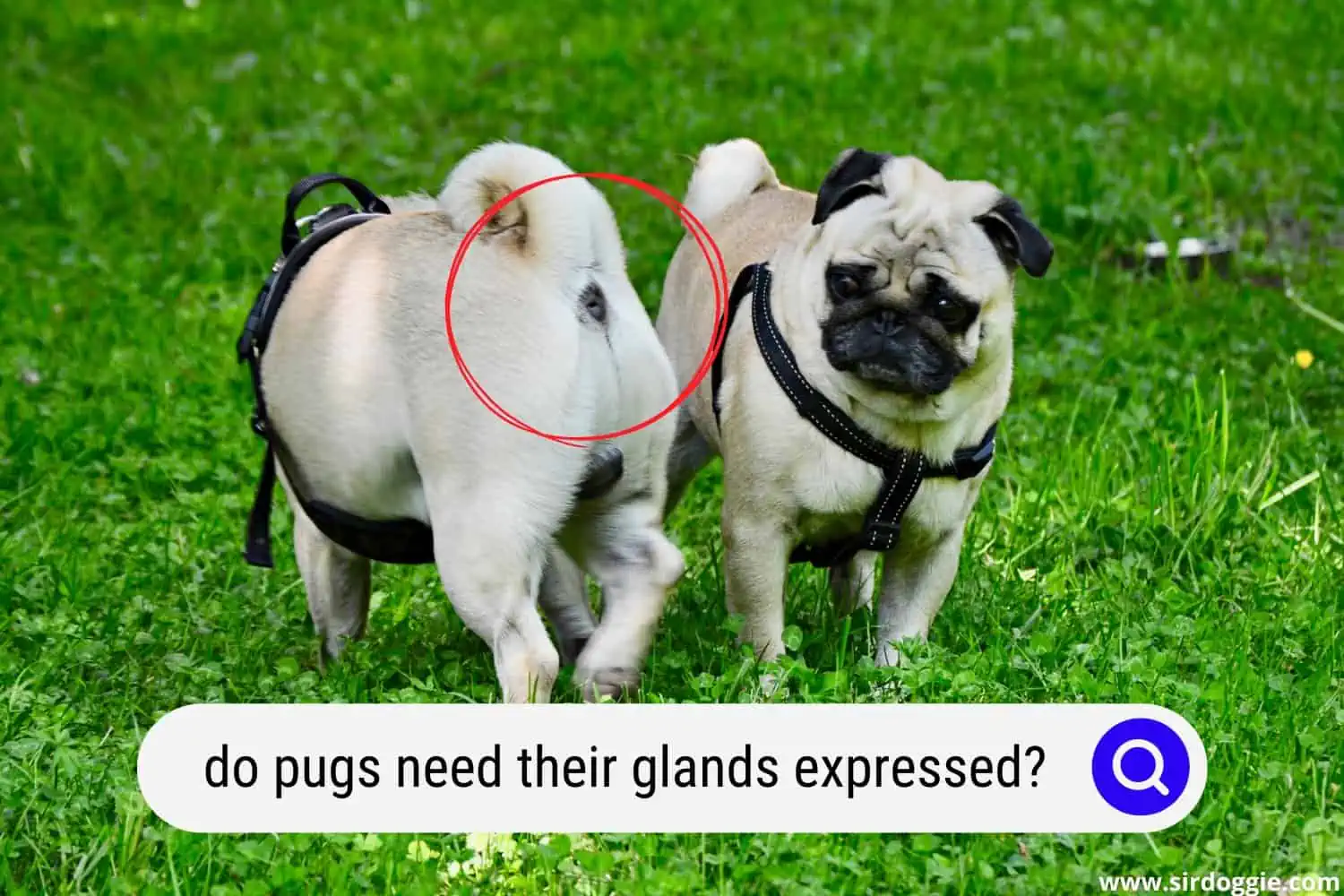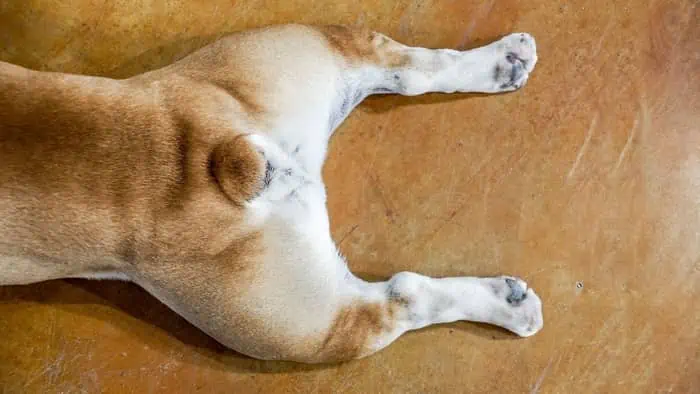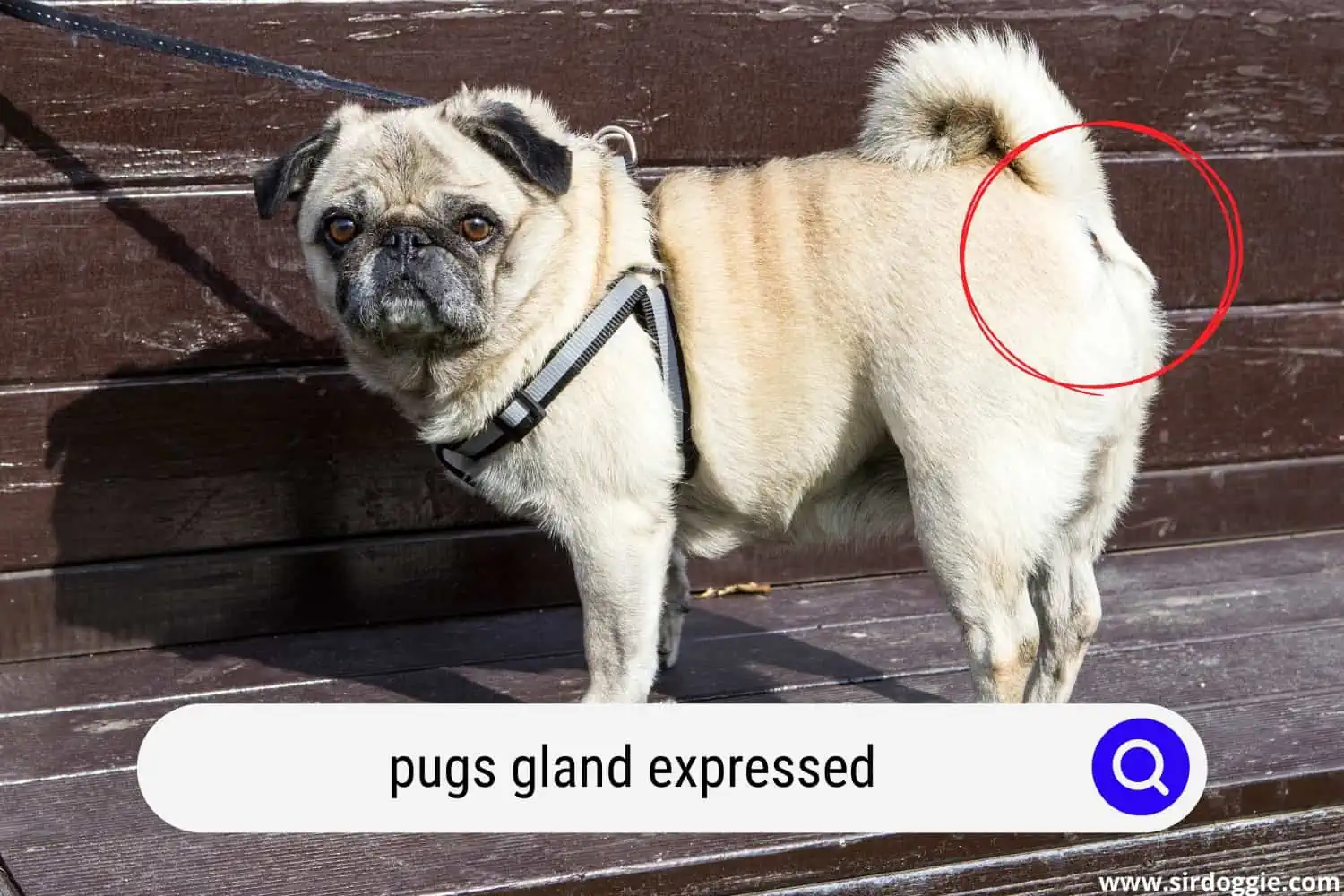Do Pugs Need Their Glands Expressed?
Do pugs need their glands expressed? If not, does it lead to greater health issues? To find out, read this concise article and learn about this topic!
Hygiene is important for the overall health of your Pug. Always try to keep it at a high level and prevent the possibility of infections.
For many owners the process of gland expression is disgusting. However, you must do it regularly, especially in senior Pugs. So, if you want to provide a healthier life for your Pug, you must get used to this and learn how to do it.

What Are Pugs Anal Glands?
The anal glands, also known as anal sacs, are two tiny glands that range in size from a pea to a grape. Their entrances are placed directly within the anus. Precisely if you look at the anus and think of a clock, they are at around 4:00 and 8:00.
The anal glands produce an odorous discharge that ranges in consistency from a thin liquid to a thick paste. They’re thought to be a scent-marking gland that leaves a mark on the feces as they defecate. If the pet is scared or startled, the glands will also express themselves.
It’s difficult to miss the odorous smell of the glands, they sometimes get infected. In other words, if you don’t clean them regularly, the glands can get infected and produce a bad smell. So, glands getting expressed if your dog gets excited is a normal thing.
However, if your Pugs’ anal glands are expressed all the time, you need to schedule a veterinarian appointment and get them examined. That’s why you need to learn how to clean them if your pug is an adult.
Do Pugs Anal Sacs Need To Be Express?

There are several hypotheses on why Pugs have anal sacs and their purpose. Some believe that the anal gland’s secretion serves as a territorial smell signal. Others say that the excrement works as a lubricant, allowing the dog to pass a hard stool more easily.
Your dog’s anus possesses two anal sacs, also known as anal glands, on the lower sides. They excrete a fragrance that identifies them and tells other Pugs information like your dog’s sex, health, and approximate age to other dogs.
The sac might malfunction because of a bad diet or a hereditary biological issue. If the sac does not empty properly, it might become obstructed, making bowel motions difficult, if not painful.
It’s unusual to witness a dog bite his butt or move his butt over the ground to ease the pain of an affected anal gland. Because this activity may cause harm to the sensitive tissue surrounding the dog’s anus, you should take your dog to the veterinarian as soon as possible.
Your veterinarian can physically express the glands, which is an unpleasant procedure. If you’re up for the challenge, your veterinarian or groomer can show you how to do it. However, most owners would rather pay to have it done.
Symptoms Of Health Issues Related To Malfunctioning Anal Pugs Glands
Scooting is a frequent symptom of uncomfortable or full anal glands. Skin irritations, allergies, and skin infections can all cause your pet to scoot, so if it’s a recurring problem, have your veterinarian investigate it.
Even though their glands are small, some dogs will scoot and benefit from having them emptied. Another symptom is licking the surrounding anal gland region. That can be accompanied by swelling of the skin and becoming red.
Lastly, a bloody stool can be an indicator of full anal glands. In that case, contact your veterinarian because the situation might be more serious than you expect.
Pug Glands Health Issues
If you don’t treat the pug glands, larger health issues may be produced. So, for you to understand better these diseases we listed the most common ones.
1. Anal gland impaction
The secretions thicken and the gland distends if the gland does not drain adequately. That might make the dog feel uneasy, and they’ll start to scoot and lick. These pug glands can be gently expressed with a gloved finger by a veterinarian.
Some dogs need to have their anal glands drained once a month, while others never require it. Smaller dog breeds appear to have more problems than other types.
2. Anal gland sacculitis
If the gland is left untreated, it can become inflamed, uncomfortable, and infected, resulting in a real infection. The gland may need to be expressed and infused with medicine as part of the treatment. Antibiotics taken orally are occasionally required.
3. Anal gland abscess
The most painful ailment develops when the gland becomes inflamed and bloated, and it frequently ruptures through the skin.
It will be necessary to empty and medication the gland. Oral antibiotics and pain relievers need to also be utilized. Sometimes you need to sedate the Pug because these glands are so painful.
4. Anal gland tumors
These are far less prevalent than the other issues mentioned above, but they are extremely dangerous. Malignant adenocarcinomas make up most anal gland tumors. Dogs with these tumors may have difficulty defecating, show signs of puffiness, or lick the affected region.
Some tumors, on the other hand, are discovered during a normal inspection while the dog is asymptomatic. Surgery and chemotherapy are two options for treatment.
How To Treat Infected Anal Glands?
Talk with your veterinarian if your dog is exhibiting signs and symptoms of an anal gland condition. The Pug sacs can be manually expressed by your veterinarian. If there is an illness, you might need to provide an antibiotic or supplement.
Consult your veterinarian about a nutrition plan for your Pug to avoid anal gland disorders. They may advise you to supplement your dog’s food with fish oil and more dietary fiber.
Pure pumpkin in a can, cooked fresh pumpkin, and unsalted pumpkin seeds are all popular additions to the diet. Check the label on the canned pumpkin and assure yourself that it doesn’t contain Xylitol, which is poisonous to dogs.
How To Express The Pugs Glands?
There are a few steps when taking this process. We will write a short guideline on how to do it:
Step 1
Isolate your Pug in the bath or on some towel because the fluid that comes out can be stinky
Step 2
Put on latex gloves and feel the anal glands with the thumb
Step 3
Squeeze the anal glands and push them. If done correctly liquid will come out. Do this process from the outside, by any means don’t stick your fingers inside the anus.
Step 4
Repeat the process a few times to ensure that the glands are getting expressed.
After these steps, clean your Pug and get rid of the fluid. Lastly, give it a treat for being a good Pug. If you don’t feel comfortable doing this, contact your veterinarian.

Conclusion
So, do pugs need their glands expressed? The correct answer is yes. If you are feeling comfortable try to do it yourself, otherwise, schedule a veterinarian appointment, and let a professional do it. Don’t force your Pug if they don’t feel safe while doing the expressing process.
In other words, pugs’ anal sacs need to be clean because that way you can prevent further infections. The pug butt is a very sensitive area. So, if you choose to take this process into your hands be precautious.
If you have any other thoughts on this topic, comment below and share them with us!

Family Dog Expert Author
Hi there! I’m Stuart, a devoted dog lover and family dog expert with over a decade of experience working with our furry companions. My passion for dogs drives me to share my knowledge and expertise, helping families build strong, loving bonds with their four-legged friends. When I’m not writing for SirDoggie, you’ll find me hiking, playing with my beautiful dog, or studying music.